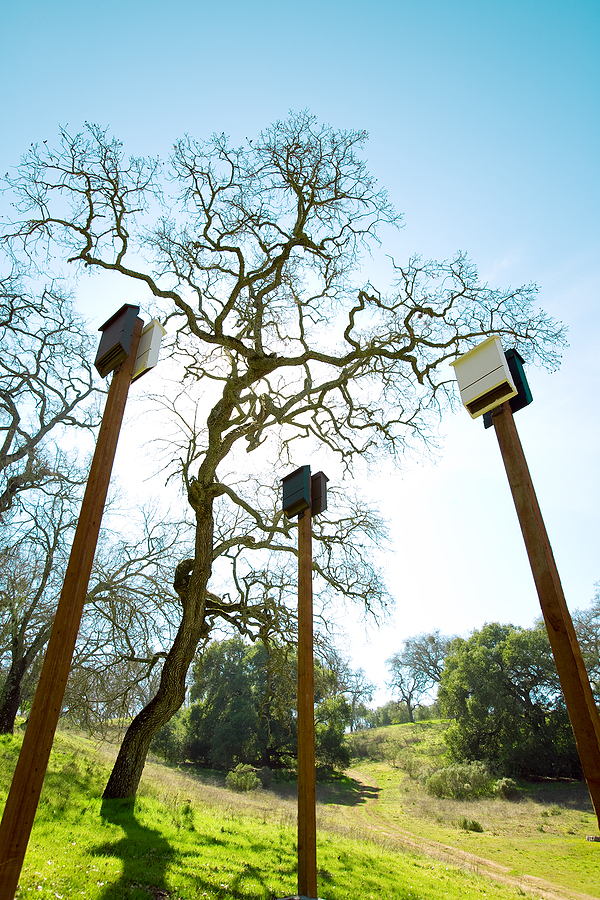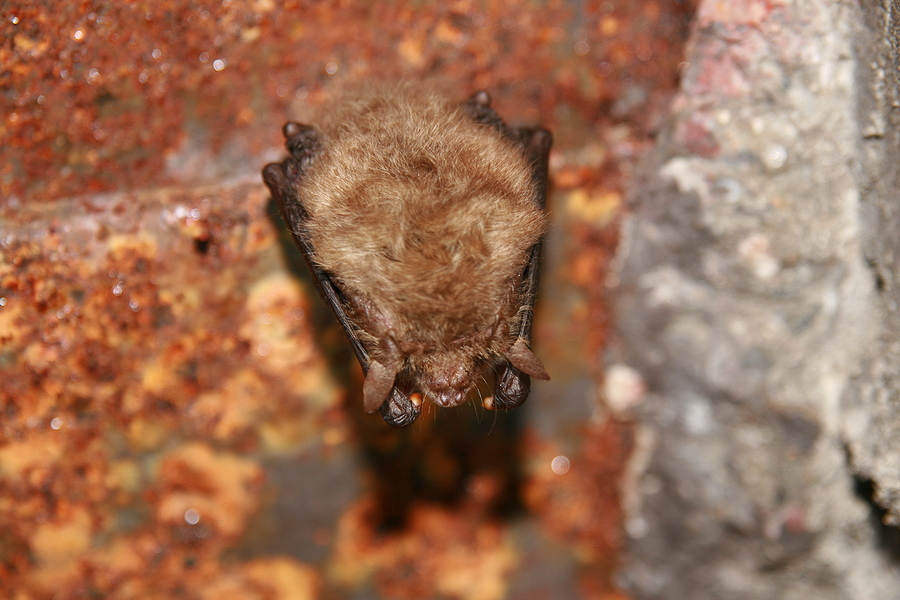As the leaves begin to change and temperatures drop across Louisville, Kentucky, many residents notice increased bat activity around their homes and neighborhoods. This seasonal surge isn’t random—it marks the beginning of bat roosting season, a critical period when these fascinating mammals seek secure shelter to survive the colder months ahead.
Understanding bat roosting behavior is essential for Louisville homeowners, particularly those dealing with bats in the attic or around their property. While these nocturnal creatures play a vital role in our ecosystem, their presence in residential areas can create concerns about health risks, property damage, and safety. By learning about local bat species, their habitat needs, and proper coexistence strategies, residents can make informed decisions about bat control while supporting conservation efforts.
This comprehensive guide will explore everything Louisville residents need to know about bat roosting season, from identifying common species to implementing humane removal practices when necessary.

Understanding Bat Roosting Season in Louisville
Bat roosting season typically begins in late summer and extends through early spring, with peak activity occurring from September through November. During this time, bats actively search for suitable roosting sites that will provide protection from harsh weather, predators, and human disturbance.
Louisville’s diverse landscape offers numerous roosting opportunities for bats. The city’s mature tree canopy, historic buildings, bridges spanning the Ohio River, and natural areas create an ideal environment for multiple bat species. However, as urban development continues to expand, many bats have adapted to using man-made structures, including residential attics, barns, and commercial buildings.
The roosting period serves multiple purposes beyond simple shelter. For some species, this is when mating occurs, making undisturbed roosting sites crucial for reproductive success. Pregnant females also require stable, warm environments to give birth and raise their young during late spring and early summer.
Bat Species Found in Louisville, Kentucky
Louisville is home to seven primary bat species, each with unique roosting preferences and conservation status. Understanding these species helps residents identify potential issues and appreciate the diversity of bats in their area.
Endangered Species Requiring Special Protection
The Indiana Bat (Myotis sodalis) and Gray Bat (Myotis grisescens) are both federally endangered bat species found in the Louisville area. These bats are protected under the Endangered Species Act, making it illegal to harm or disturb their habitats without proper permits. Indiana Bats typically roost in tree cavities and under loose bark, while Gray Bats prefer caves and cave-like structures.
Common Urban-Dwelling Species
Big Brown Bats (Eptesicus fuscus) are among the most commonly encountered species in residential areas. These adaptable bats readily roost in buildings, including attics, wall cavities, and roof spaces. Their larger size and tendency to form colonies make them particularly noticeable to homeowners.
Little Brown Bats (Myotis lucifugus) were once extremely common throughout Louisville but have experienced significant population declines due to white-nose syndrome. These small bats prefer roosting in buildings, particularly attics and barns.
Ideal Roosting Habitats in Louisville
Louisville’s varied landscape provides excellent bat habitat throughout the metropolitan area. Several key locations serve as important roosting sites for different species.
Natural Areas and Parks
The Parklands of Floyds Fork offers over 4,000 acres of diverse habitat, including mature forests perfect for tree-roosting species. This expansive park system provides critical habitat for Indiana Bats and other species requiring large, undisturbed woodland areas.
Cherokee Park, designed by Frederick Law Olmsted, features mature trees and diverse vegetation that support multiple bat species. The park’s historic design includes areas of dense canopy cover ideal for roosting bats.
Urban and Suburban Structures
Many Louisville bats have adapted to urban environments, utilizing bridges over the Ohio River and smaller waterways for roosting. These structures often provide the warm, protected spaces that bats seek during roosting season.
Residential areas with mature landscaping, older homes with accessible attics, and neighborhoods near wooded areas are particularly attractive to bats seeking bat roost locations.
Learn About Bat Removal Services ✏
Risks to Bats During Roosting Season
Bat populations in Louisville face numerous threats during roosting season that can significantly impact their survival and reproductive success.
Habitat Loss and Urban Development
Continued urban development reduces the availability of natural roosting sites. When developers clear mature trees or demolish older buildings, they eliminate crucial bat habitat. This habitat loss forces bats to seek alternative roosting sites, sometimes leading them into residential areas where conflicts with humans may arise.
Human Disturbance
Well-meaning property owners sometimes disturb bat colonies during roosting season, not realizing the critical timing of their activities. Disturbance during this period can cause bats to abandon roosts, potentially leading to mortality if alternative sites aren’t readily available.
Environmental Threats
Pesticide use poses a significant threat to bat populations. Insecticides not only reduce the insect prey that bats depend on but can also poison bats directly through bioaccumulation. When bats consume insects contaminated with pesticides, toxins build up in their systems over time.
White-nose syndrome, caused by a fungus that affects hibernating bats, has devastated bat populations across North America. While more common in cave-dwelling species, this disease continues to threaten multiple bat species in Kentucky.
Predation and Environmental Stressors
During roosting season, bats become more vulnerable to predation as they remain in fixed locations for extended periods. Cats, owls, and other predators may target roosting colonies, particularly those in accessible locations.
Health and Safety Considerations for Residents
While bats provide enormous ecological benefits, their presence in residential areas can create legitimate health and safety concerns for Louisville residents.
Disease Transmission Risks
Histoplasmosis represents the most common health risk associated with bats. This fungal disease develops from spores found in bat droppings (guano). When guano accumulates in attics or other enclosed spaces, disturbing it can release spores into the air, potentially causing respiratory infections in humans.
Rabies transmission from bats is rare but possible. While less than one percent of bats carry rabies, any direct contact with bats should be avoided. Never attempt to handle bats with bare hands, and seek medical attention if bitten or scratched.
Allergens in bat droppings and urine can trigger allergic reactions in sensitive individuals, causing respiratory symptoms and skin irritation.
Property Damage Concerns
Accumulated guano can cause structural damage to buildings over time. The acidic nature of bat droppings can stain surfaces, corrode metal, and create persistent odors. Large colonies may also cause noise disturbances, particularly during evening emergence times.
Legal & Ethical Considerations for Bat Removal
Louisville residents must understand the legal framework surrounding bat removal and control before taking any action against roosting colonies.
Federal and State Protections
The Endangered Species Act provides complete protection for Indiana Bats and Gray Bats. Disturbing these species or their habitats without proper permits can result in significant fines and legal consequences. Even non-endangered species receive protection under various state wildlife laws.
Local Ordinances
In addition to federal and state laws, Louisville has its own city ordinances that govern bat control. The city requires a permit for bat removal, and only licensed professionals can perform the removal process. Furthermore, the use of certain pesticides or chemicals is prohibited within city limits.
Ethical Considerations
Bats play a vital role in maintaining the balance of our ecosystems by controlling insect populations and pollinating plants. As such, it is important to approach bat removal with ethical considerations in mind. It is recommended to use humane methods for exclusion and relocation rather than resorting to extermination.
Environmental Impact
Using pesticides or chemicals to remove bats can have a detrimental impact on the environment, harming not only the bats but also other animals and plants in the area. By seeking professional help, you can ensure that eco-friendly solutions are utilized for bat removal.
Conclusion
In conclusion, if you suspect a bat infestation in your home or property, it is crucial to take action immediately while considering the health concerns, ethical considerations, and environmental impact. By seeking professional help, you can ensure a safe and humane bat removal process while preserving the delicate balance of our ecosystem.
Remember to never attempt to remove bats on your own and always prioritize the well-being of these beneficial creatures. With adequate knowledge and care, we can coexist with bats peacefully and maintain a healthy environment for all.
Contact Bat Removal Louisville at 502-553-7622 to handle bat concerns with care and expertise. Together, we can ensure safe solutions that protect both your home and the vital role bats play in our ecosystem.
Request a Free Bat Removal Inspection
Related Post: Bat Invasion: What to Do When They Choose Your Attic










